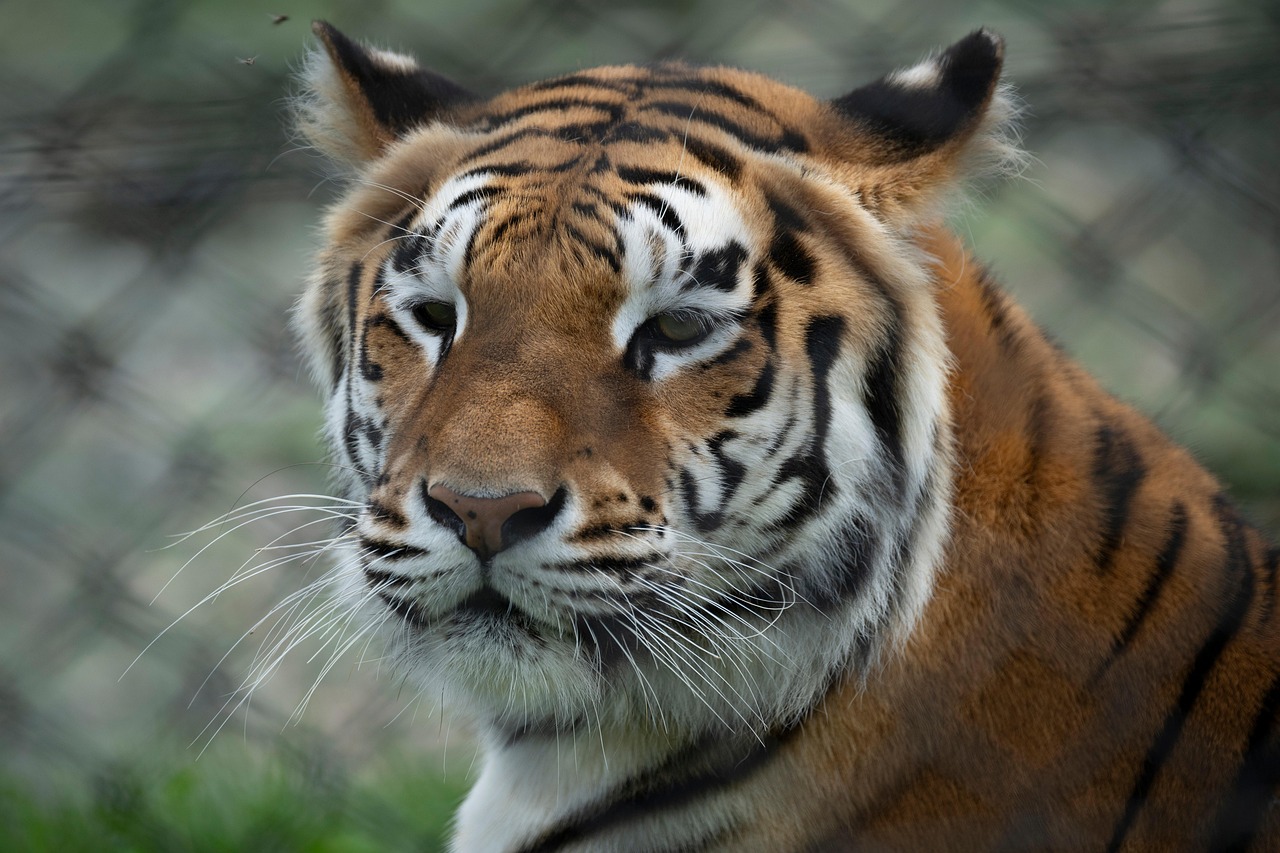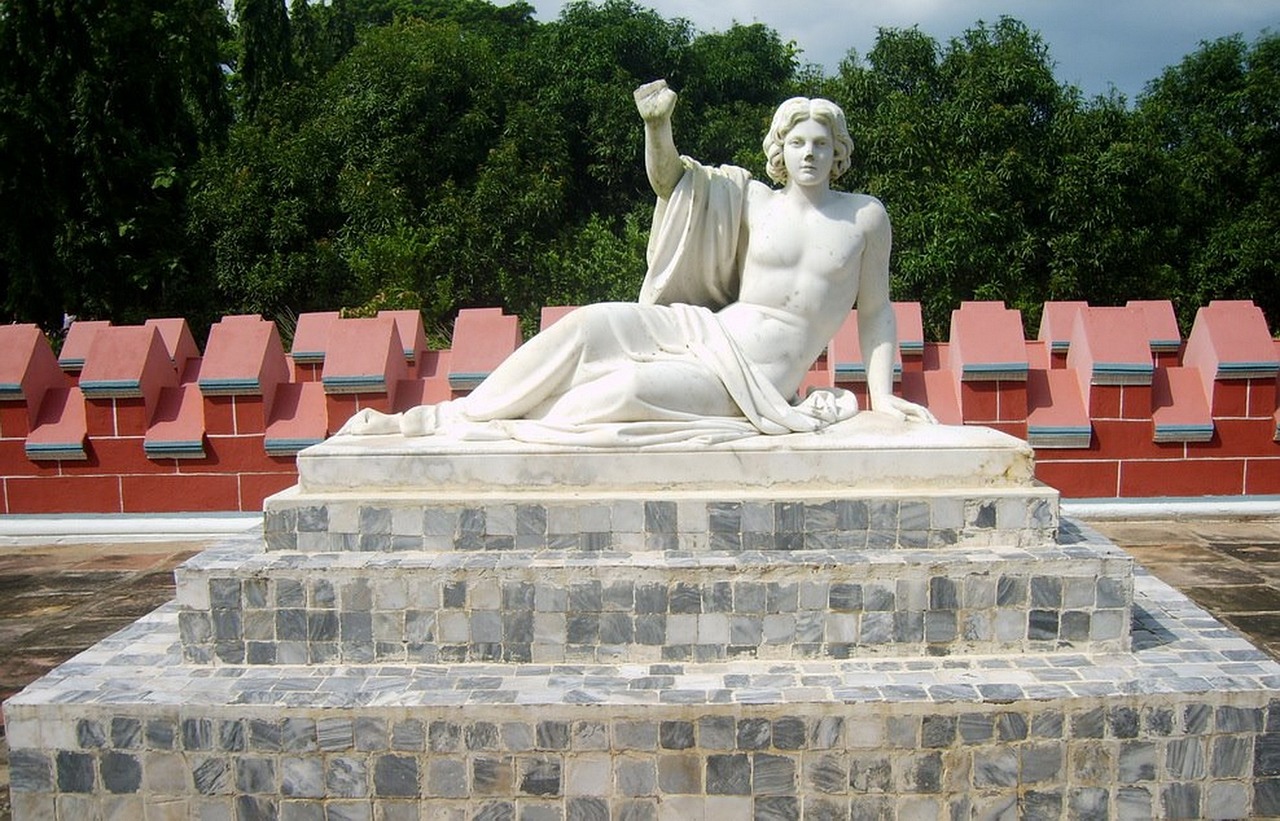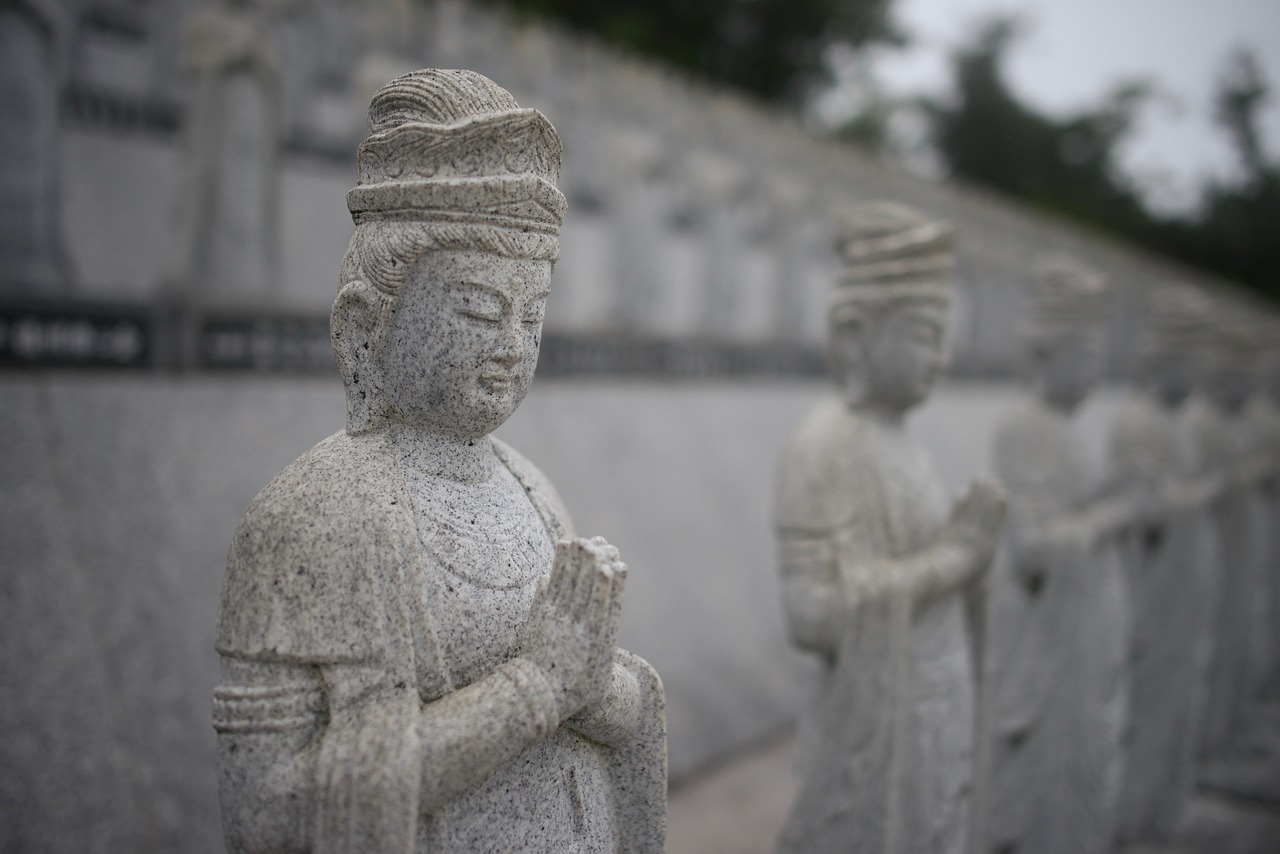This article delves into the rich cultural heritage of West Bengal, highlighting its art, literature, festivals, and historical significance. These elements together establish West Bengal’s reputation as India’s cultural capital.
Historical Significance of West Bengal
West Bengal’s history is a tapestry woven with the threads of various dynasties and colonial influences. This region has been a cradle of civilization, where the legacy of ancient kingdoms and the impact of British colonial rule have shaped its cultural identity over the centuries.
Literary Contributions of West Bengal
The literary landscape of West Bengal is adorned with the works of several literary giants. Among them, Rabindranath Tagore stands out, having made profound contributions to Indian literature and culture.
- Rabindranath Tagore’s Influence: Tagore’s poetry, music, and visual arts have significantly influenced Bengali culture, making him a pivotal figure in both national and international literary spheres.
- Tagore’s Nobel Prize: In 1913, he became the first non-European to win the Nobel Prize in Literature, underscoring the global importance of Bengali literature.
- Modern Bengali Literature: Contemporary writers continue to explore diverse themes, reflecting the evolving cultural landscape of West Bengal.
Art and Craftsmanship in West Bengal
West Bengal is renowned for its vibrant art forms, including traditional crafts and performing arts that exemplify the region’s cultural richness.
- Traditional Crafts of Bengal: Exquisite handicrafts such as terracotta, kantha embroidery, and Murshidabad silk showcase the artistic skills prevalent in this region.
- Contemporary Art Scene: The modern art scene flourishes with numerous galleries and exhibitions promoting both established and emerging artists.
Cultural Festivals of West Bengal
Festivals like Durga Puja and Poila Baisakh are vibrant celebrations that reflect the cultural diversity and communal harmony of West Bengal.
- Durga Puja: This grand festival features elaborate decorations and artistic pandals, drawing visitors from around the globe.
- Other Notable Festivals: Festivals such as Eid and Christmas further highlight the multicultural fabric of West Bengal.
The Culinary Heritage of West Bengal
The cuisine of West Bengal is a flavorful reflection of its cultural diversity, featuring an array of dishes integral to social gatherings.
- Signature Dishes: Renowned for its fish dishes and sweets like rasgulla, Bengali cuisine showcases rich flavors.
- Street Food Culture: The vibrant street food scene, offering delights like puchka and kathi rolls, enhances the culinary charm of the region.
Conclusion: West Bengal’s Cultural Legacy
In conclusion, West Bengal is a testament to India’s rich cultural heritage. Its historical significance, literary contributions, artistic expressions, festivals, and culinary delights collectively reinforce its esteemed status as the cultural capital of India.

Historical Significance of West Bengal
West Bengal’s history is a rich tapestry woven with the threads of various dynasties, colonial influences, and cultural transformations. This region, located in eastern India, has been a melting pot of diverse cultures, languages, and traditions that have evolved over centuries.
The history of West Bengal can be traced back to ancient times when it was ruled by several powerful dynasties, including the Gupta and Pala empires. These dynasties contributed significantly to the region’s cultural and intellectual development, particularly in the fields of art, literature, and philosophy. The Pala dynasty, for instance, was instrumental in the spread of Buddhism and the establishment of renowned educational institutions like Nalanda.
During the medieval period, West Bengal saw the rise of the Bengal Sultanate, which further enriched its cultural landscape. The fusion of Hindu and Muslim traditions during this time led to a unique cultural synthesis, evident in the region’s art, music, and cuisine. This period also marked the beginning of significant trade and commerce, establishing West Bengal as a crucial economic hub.
With the advent of colonial rule in the 18th century, West Bengal underwent profound changes. The British colonial administration brought about significant infrastructural developments, yet it also led to social and economic upheavals. The Bengal Renaissance emerged during this time, fostering a revival of arts and literature, with figures like Rabindranath Tagore and Swami Vivekananda playing pivotal roles in shaping modern Indian thought.
Today, West Bengal stands as a testament to its historical richness, reflecting a blend of ancient traditions and modern influences. The state’s history is not just a chronicle of events but a vibrant narrative that continues to influence its cultural identity and societal values.

Literary Contributions of West Bengal
West Bengal is a state that has long been celebrated for its profound contributions to the literary world. Its rich tapestry of literature is woven with the threads of history, culture, and social movements, making it a beacon of artistic expression in India.
At the heart of this literary legacy lies the illustrious figure of Rabindranath Tagore, a polymath whose works transcend time and geography. Tagore’s poetry, plays, and songs have not only shaped Bengali literature but have also resonated across the globe, earning him the prestigious Nobel Prize in Literature in 1913. This accolade marked a significant milestone, as he became the first non-European to receive this honor, thereby introducing the world to the richness of Bengali literature.
Tagore’s influence extends beyond his own works; he has inspired generations of writers, poets, and artists. His exploration of themes such as love, nature, and nationalism continues to inspire contemporary authors who delve into diverse narratives that reflect the evolving cultural landscape of West Bengal. The literary scene is vibrant, with a plethora of voices emerging from the state, each contributing to its rich literary heritage.
In addition to Tagore, other notable literary figures such as Sarat Chandra Chattopadhyay and Bibhutibhushan Bandyopadhyay have made significant contributions to Bengali literature. Their works often depict the struggles and aspirations of the common people, providing a window into the social fabric of West Bengal.
The folklore of West Bengal also plays a crucial role in its literary tradition. Tales passed down through generations, often told in the form of songs and stories, showcase the region’s cultural richness and its ability to preserve traditions. This oral tradition complements written literature, creating a holistic literary experience.
In conclusion, the literary contributions of West Bengal are vast and varied, reflecting a unique blend of history, culture, and artistic expression. From the timeless works of Rabindranath Tagore to the contemporary voices shaping today’s narratives, West Bengal remains a vital center of literary excellence, continually inspiring and engaging readers both locally and globally.
Rabindranath Tagore’s Influence
Rabindranath Tagore, a luminary in the realm of literature, music, and art, has profoundly influenced the cultural landscape of Bengal and beyond. His multifaceted contributions have not only enriched Bengali culture but have also established him as a pivotal figure in global literary circles.
Born in 1861, Tagore was a visionary who seamlessly blended poetry, music, and art into a cohesive cultural expression. His literary works, characterized by their lyrical beauty and profound philosophical insights, resonate deeply with readers, transcending geographical boundaries. Tagore’s poetry often reflects themes of nature, love, and human connection, encapsulating the essence of the human experience.
Moreover, Tagore’s musical compositions, particularly his Rabindra Sangeet, have become an integral part of Bengali identity. These songs, imbued with emotional depth and cultural significance, are celebrated during various festivals and gatherings, fostering a sense of unity and belonging among the people of Bengal.
Tagore’s artistic endeavors also deserve recognition. His paintings, which evolved over time, showcase a unique blend of traditional and modern styles, reflecting his innovative spirit. Through his art, Tagore challenged conventional norms and encouraged a new wave of creativity in Bengal, inspiring countless artists to explore their own expressions.
In 1913, Tagore made history by becoming the first non-European to be awarded the Nobel Prize in Literature. This monumental achievement not only highlighted the richness of Bengali literature but also positioned Tagore as a global cultural ambassador. His works continue to inspire contemporary writers and artists, ensuring that his legacy endures.
In summary, Rabindranath Tagore’s influence on Bengali culture is immeasurable. His poetry, music, and art have woven a rich tapestry of cultural heritage that continues to shape the identity of Bengal. As we celebrate his contributions, we recognize the profound impact he has had on both national and international artistic landscapes.
Tagore’s Nobel Prize
In 1913, Rabindranath Tagore made history by becoming the first non-European to be awarded the prestigious Nobel Prize in Literature. This remarkable achievement not only marked a significant milestone in Tagore’s own career but also highlighted the global significance of Bengali literature and arts. Tagore’s win was a testament to the rich cultural heritage of India, showcasing the profound impact of Indian writers on the world stage.
Tagore’s literary genius transcended borders, as his works resonated with universal themes of humanity, love, and spirituality. His poetry, prose, and songs reflect a deep connection to nature and the human experience, earning him acclaim from both critics and readers alike. The Nobel Prize committee recognized this unique ability to bridge cultural divides through the power of words.
Furthermore, Tagore’s win served as a catalyst for the global appreciation of Bengali literature. It opened the doors for other Bengali authors to gain recognition, fostering a literary renaissance in the region. This cultural awakening encouraged writers to explore diverse themes and styles, enriching the literary landscape of West Bengal.
Tagore’s influence extended beyond literature; he was also a prolific artist and musician. His contributions to music and visual arts further solidified his status as a cultural icon. Today, his legacy is celebrated not only in India but across the world, inspiring countless artists and writers.
In conclusion, Tagore’s Nobel Prize in 1913 was not just an individual accolade; it was a landmark moment that emphasized the importance of Bengali culture on the global stage. It paved the way for future generations to appreciate and explore the rich tapestry of Indian literature and arts.
Modern Bengali Literature
has emerged as a vibrant tapestry of voices, reflecting the rich cultural heritage and evolving societal norms of West Bengal. Contemporary authors continue to build on Rabindranath Tagore’s legacy, exploring diverse themes and styles that resonate with the complexities of modern life.
In the wake of Tagore’s profound influence, today’s writers delve into a myriad of subjects, including identity, migration, gender issues, and social justice. These themes not only reflect the changing dynamics of Bengali society but also engage with global literary trends, making Bengali literature relevant on the international stage.
| Author | Notable Works | Themes Explored |
|---|---|---|
| Jhumpa Lahiri | Interpreter of Maladies, The Namesake | Immigrant experience, identity |
| Shankha Ghosh | Chandralekha, Bhasha O Sahitya | Social issues, existentialism |
| Sunil Gangopadhyay | Arjun, Prothom Alo | Love, nature, history |
Furthermore, the rise of digital platforms has significantly impacted the dissemination of literature. Writers are now able to reach wider audiences through blogs, e-books, and social media, fostering a new generation of readers who engage with literature in innovative ways. This accessibility encourages a cross-pollination of ideas, as authors from different backgrounds and regions contribute to the evolving narrative of Bengali literature.
Moreover, literary festivals and workshops in West Bengal have become essential venues for dialogue among writers, critics, and readers. These gatherings not only celebrate literary achievements but also encourage collaboration and experimentation, allowing contemporary authors to push the boundaries of traditional storytelling.
In conclusion, modern Bengali literature is a dynamic field that continues to thrive, reflecting the diverse voices and experiences of contemporary society. As it evolves, it remains deeply rooted in the rich legacy of its predecessors, ensuring that the cultural capital of India continues to inspire and engage future generations.
Folklore and Oral Traditions
play a crucial role in the cultural landscape of West Bengal, providing a window into the region’s rich heritage and vibrant history. The narratives, songs, and dances encapsulate the essence of Bengali identity, serving as a means of preserving cultural values and traditions across generations.
The rich tapestry of Bengali folklore is woven with a myriad of tales that range from mythological stories to everyday life experiences. These narratives often feature mythical creatures and heroic figures, reflecting the aspirations and struggles of the Bengali people. The oral tradition serves not merely as entertainment but as a vehicle for moral lessons and cultural teachings.
| Type of Folklore | Description |
|---|---|
| Tales | Mythical stories often involving gods, goddesses, and folk heroes. |
| Songs | Traditional songs that celebrate festivals, seasons, and daily life. |
| Dances | Performative expressions that narrate stories and cultural themes. |
Bengali songs, particularly Baul music, are integral to the cultural fabric, often conveying deep philosophical thoughts and social messages. The Bauls are wandering minstrels whose music transcends social and religious boundaries, emphasizing love, spirituality, and the quest for truth.
Moreover, traditional dances such as Chhau and Jatra not only entertain but also narrate stories of valor and devotion, captivating audiences with their vibrant performances. These art forms are often showcased during festivals, reinforcing community bonds and cultural pride.
In conclusion, the of West Bengal are a testament to the region’s ability to preserve its cultural heritage. Through tales, songs, and dances, these traditions continue to thrive, ensuring that the essence of Bengali culture remains alive for future generations.
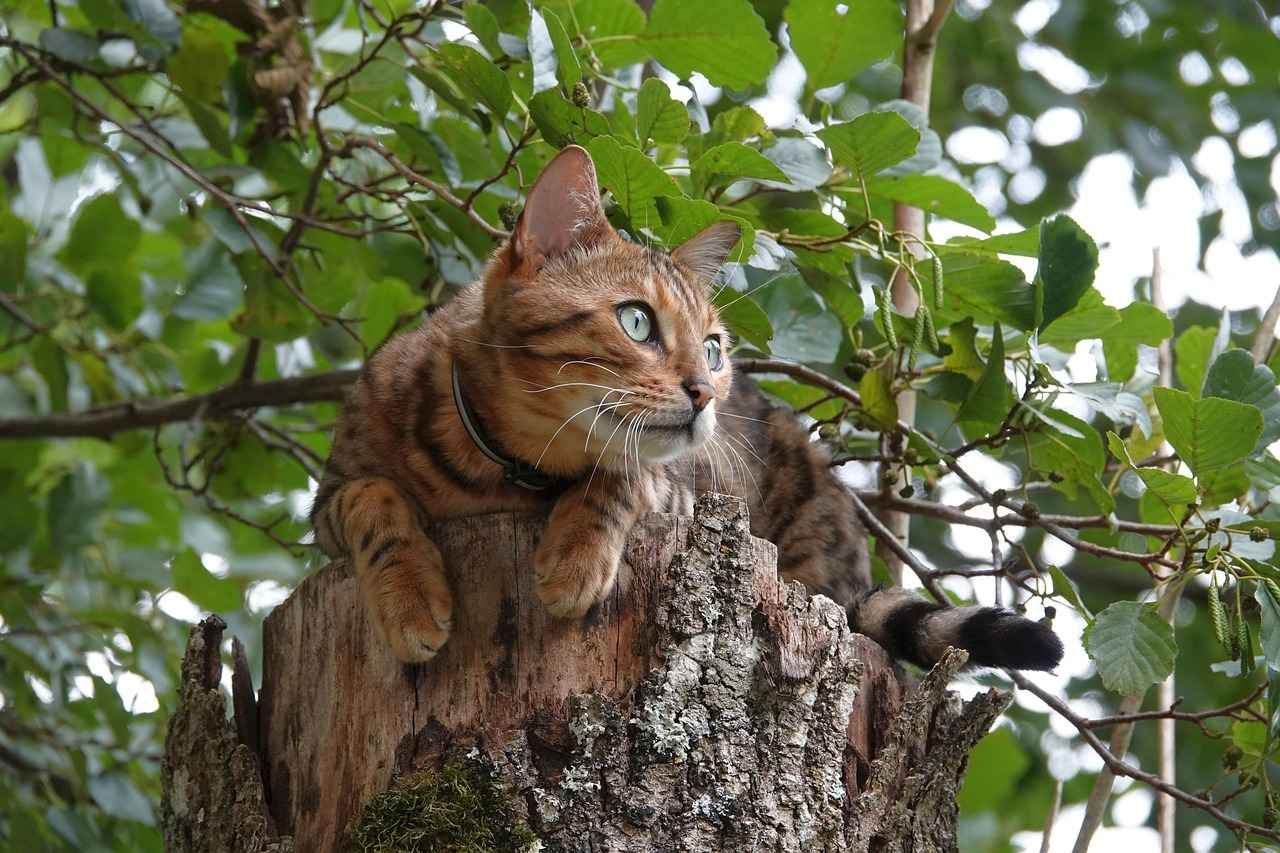
Art and Craftsmanship in West Bengal
is a vibrant testament to the region’s rich cultural tapestry. This state, located in eastern India, is celebrated for its diverse art forms, which encompass traditional crafts, exquisite paintings, and dynamic performing arts. Each of these artistic expressions not only showcases the exceptional skills of local artisans but also reflects the deep-rooted cultural heritage and artistic diversity that West Bengal possesses.
From intricate handicrafts to mesmerizing folk performances, the art scene in West Bengal is both rich and varied. The traditional crafts, such as kantha embroidery and terracotta sculptures, exemplify the meticulous craftsmanship that has been passed down through generations. Artisans dedicate their lives to perfecting these techniques, ensuring that the unique stories and traditions of Bengal are preserved.
| Traditional Crafts | Description |
|---|---|
| Kantha Embroidery | A form of embroidery using old saris, creating beautiful quilted patterns. |
| Terracotta Art | Clay sculptures that often depict mythological themes and rural life. |
| Murshidabad Silk | Luxurious silk fabric known for its intricate designs and vibrant colors. |
Moreover, the performing arts in West Bengal, including theater, dance, and music, play a crucial role in the cultural landscape. Traditional forms like Rabindra Nritya and Baul music not only entertain but also convey profound philosophical messages, enriching the audience’s experience.
As we delve deeper into the contemporary art scene, we find a flourishing community of artists who are redefining boundaries. Art galleries and exhibitions across cities like Kolkata showcase the works of both established and emerging talents, fostering a culture of innovation and creativity.
In conclusion, the art and craftsmanship of West Bengal stand as a vibrant reflection of its cultural richness. The blend of traditional and modern art forms continues to enchant and inspire, making West Bengal a beacon of artistic excellence in India.
Traditional Crafts of Bengal
are a vibrant expression of the region’s rich cultural heritage, showcasing the exceptional skills and creativity of artisans. Among these crafts, terracotta pottery, kantha embroidery, and Murshidabad silk stand out as prime examples of the intricate artistry that has been passed down through generations.
Terracotta Pottery is one of the oldest forms of craft in Bengal, characterized by its unique designs and utility. Artisans mold clay into various shapes, creating everything from decorative items to everyday utensils. The red clay used in terracotta gives it a distinctive appearance, and the craftsmanship often reflects local traditions and stories, making each piece a work of art.
Kantha Embroidery is another significant craft, known for its beautiful stitching techniques. Originating from the rural areas of Bengal, kantha involves the use of old sarees and cloth pieces, which are layered and stitched together to create intricate patterns and designs. This art form not only showcases the creativity of the artisans but also promotes sustainability by repurposing fabric. The vibrant colors and motifs often depict nature, folklore, and everyday life, making kantha a beloved textile.
Murshidabad Silk is renowned for its luxurious texture and intricate designs. This traditional silk weaving craft has a rich history, dating back to the time of the Nawabs. The silk produced in Murshidabad is known for its softness and durability, often adorned with elaborate patterns and gold zari work. It is a preferred choice for weddings and special occasions, symbolizing elegance and sophistication.
In conclusion, the not only reflect the artistic prowess of the region but also serve as a vital link to its cultural identity. Each craft tells a story, preserving the history and traditions of Bengal while continuing to inspire future generations of artisans.
Contemporary Art Scene
Contemporary Art Scene in West Bengal
The in West Bengal is a vibrant tapestry of creativity, innovation, and cultural expression. This dynamic environment not only showcases the works of established artists but also provides a platform for emerging talents to shine. With a rich history of artistic endeavors, West Bengal continues to foster a culture that embraces both tradition and modernity.
Numerous galleries and exhibitions dot the landscape of this culturally rich state, each contributing to the artistic discourse. From the bustling streets of Kolkata to the serene surroundings of Santiniketan, artists are inspired by their surroundings and the stories they tell. The presence of institutions like the Rabindra Bharati University and the Visva-Bharati University plays a crucial role in nurturing artistic talent, offering courses that blend classical techniques with contemporary practices.
| Gallery Name | Location | Focus Area |
|---|---|---|
| Birla Academy of Art and Culture | Kolkata | Modern Art |
| Gaganendra Shilpa Pradarshashala | Kolkata | Contemporary Art |
| Shantiniketan Gallery | Shantiniketan | Traditional and Modern |
Moreover, events like the Kolkata Art Fair and India Art Fair attract art enthusiasts from across the globe, providing a platform for artists to showcase their work to a broader audience. These events not only highlight the diversity of artistic expressions but also encourage dialogues around social issues and cultural narratives.
In addition to visual arts, the contemporary art scene in West Bengal embraces performance arts, including theater and dance, which further enrich the cultural landscape. This fusion of various art forms creates a holistic experience for audiences and artists alike.
In conclusion, the contemporary art scene in West Bengal is a testament to the region’s enduring spirit of creativity. By supporting both established and emerging artists, West Bengal continues to be a beacon of artistic innovation, making significant contributions to the global art community.

Cultural Festivals of West Bengal
West Bengal is a region celebrated for its vibrant cultural festivals that bring communities together in a spirit of joy and harmony. These festivals are not just events; they are a reflection of the state’s rich heritage and the diverse traditions that coexist within it.
Among the most prominent festivals is Durga Puja, a grand celebration dedicated to the goddess Durga. This festival, which usually occurs in September or October, transforms the streets of Kolkata into a vibrant spectacle of art, music, and devotion. Elaborate pandals (temporary structures) are constructed, showcasing intricate designs and artistic themes that often reflect contemporary social issues. The atmosphere is filled with the sounds of traditional music, the aroma of delicious food, and the sight of beautifully adorned idols, drawing visitors from all over the world.
Another significant festival is Poila Baisakh, the Bengali New Year, celebrated in April. This festival marks the beginning of the agricultural year and is a time for families to come together, exchange gifts, and enjoy traditional meals. Streets are adorned with colorful decorations, and cultural programs showcasing folk music and dance are organized to celebrate the rich cultural heritage of Bengal.
Other notable festivals include Eid and Christmas, which highlight the region’s multicultural fabric. These celebrations foster unity among different communities, as people come together to celebrate their respective traditions. Each festival is a testament to the communal harmony that characterizes West Bengal.
In conclusion, the cultural festivals of West Bengal are a vibrant tapestry of traditions that not only celebrate the state’s rich heritage but also promote unity and diversity. These festivals serve as a reminder of the importance of community and the joy of coming together to celebrate life.
Durga Puja: A Cultural Extravaganza
Durga Puja is more than just a festival; it is a cultural phenomenon that encapsulates the essence of West Bengal’s rich heritage. Each year, millions gather to celebrate this grand occasion, which typically spans over ten days, culminating in the immersion of the idol of Goddess Durga. The festival is marked by a blend of religious fervor and artistic expression, making it a unique experience for both locals and tourists alike.
The preparations for Durga Puja begin months in advance, with artisans working tirelessly to create elaborate idols and decorative pandals. These pandals, often themed and artistically designed, become the focal point of the celebrations. Visitors are awed by the intricate craftsmanship and creativity that go into each structure, reflecting the artistic diversity of the region.
Throughout the festival, vibrant performances of traditional music and dance fill the air, showcasing the cultural richness of Bengal. From classical dances to modern theatrical performances, the festival serves as a platform for artists to display their talents. Street food stalls offer a variety of local delicacies, enhancing the festive atmosphere and allowing attendees to indulge in the flavors of Bengali cuisine.
Moreover, Durga Puja promotes a sense of community and unity, as people from different backgrounds come together to celebrate. The festival transcends religious boundaries, fostering a spirit of harmony and inclusiveness. It is a time when families reunite, friendships strengthen, and new connections are forged.
In conclusion, Durga Puja stands as a testament to West Bengal’s cultural legacy. Its blend of spirituality, artistry, and community engagement makes it a remarkable celebration that attracts visitors from around the globe. This cultural extravaganza not only honors the divine feminine but also reinforces the idea that art and tradition can bring people together in joyous celebration.
Other Notable Festivals
West Bengal is a melting pot of cultures, showcasing an array of festivals that reflect its rich heritage and communal harmony. Among the most celebrated are Durga Puja, Eid, Christmas, and the Bengali New Year. These festivals not only highlight the region’s diverse traditions but also foster a sense of unity among its inhabitants.
Durga Puja is arguably the most significant festival in West Bengal, celebrated with grandeur and enthusiasm. It marks the victory of the goddess Durga over the buffalo demon Mahishasura, symbolizing the triumph of good over evil. The elaborate decorations, artistic pandals, and vibrant cultural performances attract visitors from across the globe, making it a cultural extravaganza.
Eid, celebrated by the Muslim community, showcases the spirit of togetherness and generosity. Families come together to share lavish meals, exchange gifts, and engage in prayers. The festive atmosphere is palpable as people dress in their finest attire and visit mosques, reinforcing the values of compassion and community.
Christmas is another festival that adds to the multicultural tapestry of West Bengal. Celebrated by the Christian community, it is marked by joyous caroling, festive decorations, and gatherings that bring families and friends together. The streets are adorned with lights, and traditional delicacies are shared, emphasizing the importance of love and unity during this season.
The Bengali New Year, or Poila Baisakh, is a time for renewal and celebration. It is marked by vibrant processions, traditional music, and delicious feasts. People wear new clothes and visit family and friends, reinforcing social bonds and cultural identity.
In conclusion, the festivals of West Bengal, including Durga Puja, Eid, Christmas, and the Bengali New Year, exemplify the region’s multicultural fabric. They celebrate various traditions and foster unity, making West Bengal a true embodiment of diversity and harmony.
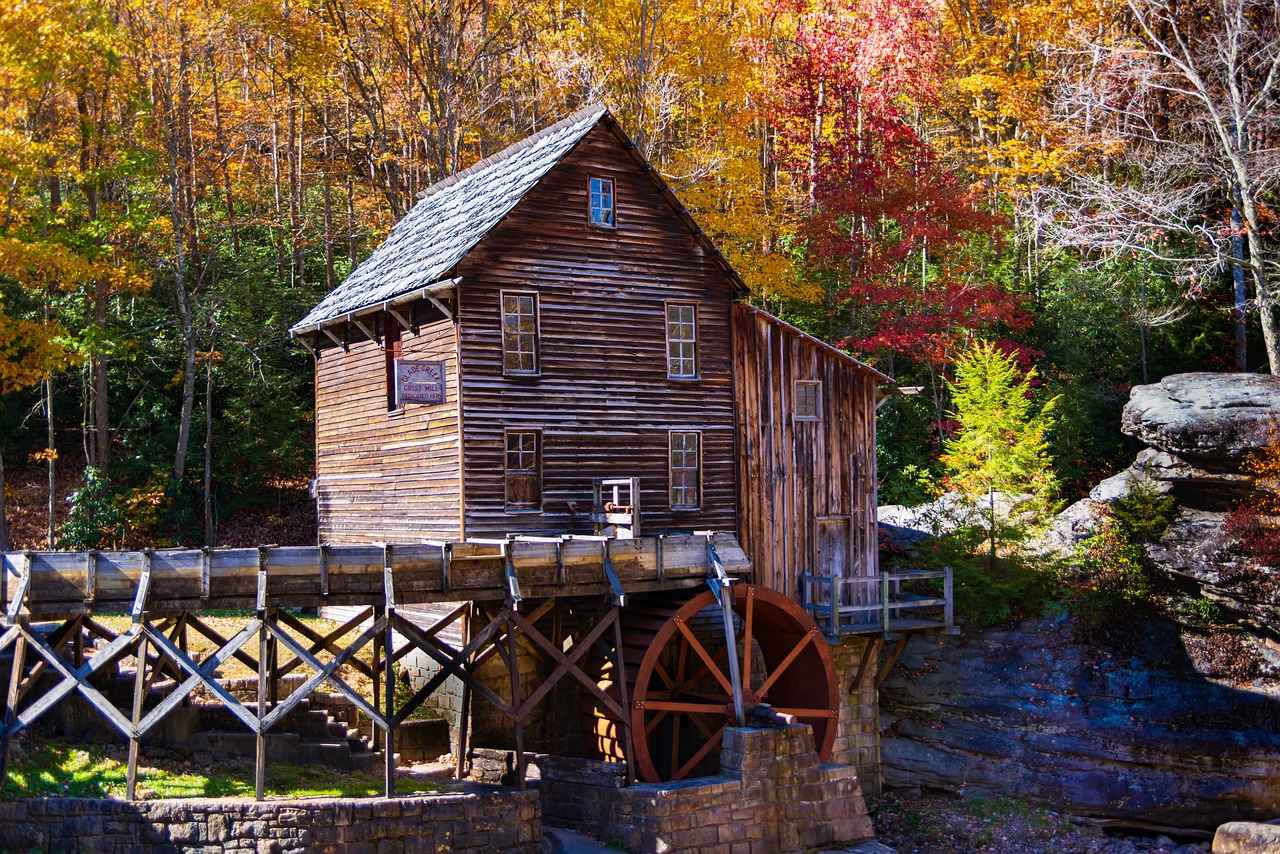
The Culinary Heritage of West Bengal
is a fascinating aspect of the region’s rich cultural tapestry. Known for its diverse flavors and unique dishes, Bengali cuisine reflects the area’s history, geography, and social fabric. This article delves into the various elements that make West Bengal’s culinary offerings truly special.
Bengali cuisine is characterized by a harmonious blend of spices, fresh ingredients, and a variety of cooking techniques. The use of fish, rice, and lentils forms the foundation of many traditional dishes. The region’s proximity to the Bay of Bengal ensures that fish, particularly hilsa, remains a staple in many households.
- Fish Curry (Shorshe Ilish): This dish features hilsa fish cooked in a mustard sauce, epitomizing the flavors of Bengali cooking.
- Bhapa Ilish: Steamed hilsa fish marinated with spices, showcasing the delicate flavors of the fish.
- Mishti Doi: A traditional sweetened yogurt that is a favorite dessert among Bengalis.
- Rasgulla: A popular sweet made from chhena (curdled milk) and soaked in sugar syrup.
The vibrant street food culture in West Bengal is an essential part of its culinary landscape. Popular street foods include:
- Puchka: A type of panipuri filled with spicy tamarind water and potato filling.
- Kathi Rolls: Skewered meat or vegetables wrapped in paratha, perfect for on-the-go snacking.
Food plays a central role in Bengali festivals. During Durga Puja, elaborate feasts are prepared, featuring a variety of dishes that bring families and communities together. This celebration of food not only highlights the culinary skills of the region but also fosters a sense of unity and joy.
The geographical diversity of West Bengal, from the Sundarbans to the Himalayan foothills, influences the variety of ingredients used in its cuisine. This has led to a rich culinary heritage that is both varied and unique, appealing to a wide range of palates.
West Bengal’s culinary heritage is a vibrant reflection of its cultural diversity. With its rich flavors, traditional dishes, and street food delights, it offers a unique gastronomic experience that is integral to the region’s identity. Whether it’s a festive feast or a simple home-cooked meal, the cuisine of West Bengal continues to be a source of pride and joy for its people.
Signature Dishes of Bengali Cuisine
Bengali cuisine is a vibrant tapestry of flavors, textures, and culinary traditions that reflect the rich cultural heritage of West Bengal. Renowned for its emphasis on fish and sweets, Bengali dishes are a celebration of the region’s natural resources and culinary expertise.
At the heart of Bengali gastronomy lies a profound love for fish, with dishes such as shorshe ilish (hilsa fish in mustard sauce) and chingri malai curry (prawn curry in coconut milk) being iconic representations. These dishes are not only flavorful but also showcase the unique use of spices like mustard, turmeric, and cumin, which are essential to creating the distinct taste of Bengali food.
Moreover, the region is famous for its sweets, particularly rasgulla and sandesh. Rasgulla, a soft and spongy sweet made from chhena (fresh cheese), is often soaked in sugar syrup, making it a delightful treat. Sandesh, on the other hand, is crafted from finely kneaded chhena and flavored with cardamom or saffron, showcasing the finesse of Bengali sweet-making.
The use of unique spices is a hallmark of Bengali cuisine. Spices such as panch phoron (a blend of five spices) and kalonji (nigella seeds) add depth and complexity to dishes. Additionally, the use of fresh herbs like coriander and mint enhances the freshness of the meals, making them not only delicious but also aromatic.
Bengali street food is another facet of its culinary landscape. Snacks like puchka (pani puri) and kathi rolls are immensely popular, offering a burst of flavors that cater to the fast-paced lifestyle of urban dwellers. These street foods are often enjoyed during festivals and gatherings, further emphasizing the social aspect of Bengali dining.
In conclusion, Bengali cuisine is a rich and diverse culinary tradition that offers a unique blend of flavors, ingredients, and cooking techniques. Its emphasis on fish and sweets, along with the skillful use of spices, makes it a vital part of West Bengal’s cultural identity, inviting food lovers to explore its myriad offerings.
Street Food Culture
in West Bengal is a vibrant expression of the region’s culinary heritage, offering a delightful array of flavors and experiences that are not only delicious but also deeply rooted in local traditions. This culture is characterized by its diverse offerings, which cater to a wide range of tastes and preferences, making it a paradise for food enthusiasts.
The streets of West Bengal are alive with the aroma of various street foods, each telling a story of its own. Among the most popular items are puchka, a type of crispy, hollow puri filled with spicy tamarind water, and kathi rolls, which consist of skewered meat or vegetables wrapped in a paratha. These dishes are not just meals; they are an experience that reflects the local culture and community.
Another beloved street food is mishti doi, a sweetened yogurt that serves as a perfect dessert after a savory meal. The chaats, with their mix of flavors and textures, are also a must-try, offering a burst of taste in every bite. The street vendors, often referred to as ‘the heart of the city’, play a crucial role in bringing people together, fostering a sense of community through food.
In addition to traditional offerings, the street food scene in West Bengal is continuously evolving, with new trends and fusion dishes emerging that incorporate global flavors while maintaining local authenticity. This blend of tradition and innovation keeps the culinary landscape dynamic and exciting.
The accessibility and affordability of street food make it a popular choice for locals and tourists alike. Whether you are enjoying a quick snack on the go or savoring a meal with friends, the street food of West Bengal offers a unique taste of the region’s rich cultural tapestry.
In conclusion, the street food culture of West Bengal is a testament to the region’s culinary charm, making it an essential aspect of the local lifestyle. For anyone looking to experience the true essence of Bengal, indulging in its street food is a delightful journey that should not be missed.

Conclusion: West Bengal’s Cultural Legacy
Why West Bengal Is the Cultural Capital of India
This article explores the rich cultural heritage of West Bengal, examining its art, literature, festivals, and historical significance, which collectively establish its reputation as India’s cultural capital.
West Bengal stands as a testament to India’s rich cultural heritage, showcasing a vibrant tapestry woven from its historical significance, literary contributions, art forms, festivals, and culinary delights. This region has long been recognized as the cultural capital of India, and for good reason.
Historically, West Bengal has been a melting pot of various influences, from ancient dynasties to colonial powers, each leaving an indelible mark on its cultural identity. The historical significance of West Bengal is evident in its architecture, traditions, and the resilience of its people, who have preserved their rich heritage through generations.
In the realm of literature, West Bengal has produced literary giants such as Rabindranath Tagore, whose profound works continue to resonate within and beyond Indian borders. Tagore’s influence has paved the way for modern Bengali literature, inspiring contemporary authors to explore diverse themes that reflect the evolving cultural landscape.
Art and craftsmanship in West Bengal are equally remarkable. The region is renowned for its traditional crafts, such as kantha embroidery and terracotta sculptures, which exemplify the exquisite craftsmanship of its artisans. This artistic legacy is complemented by a thriving contemporary art scene that fosters creativity and innovation.
Cultural festivals, such as Durga Puja and Poila Baisakh, are vibrant celebrations that bring communities together, showcasing the region’s diversity and communal harmony. These festivals not only highlight the religious fervor of the people but also serve as a platform for artistic expression and cultural exchange.
Finally, the culinary heritage of West Bengal is a feast for the senses, characterized by a variety of flavors and dishes that are integral to its identity. From mouth-watering fish curries to delectable sweets like rasgulla, the cuisine reflects the region’s rich cultural tapestry.
In conclusion, West Bengal’s cultural legacy is a multifaceted treasure that continues to thrive and evolve. Its historical significance, literary contributions, artistic expressions, vibrant festivals, and culinary delights collectively reinforce its status as the cultural capital of India.
Frequently Asked Questions
- What makes West Bengal the cultural capital of India?
West Bengal is celebrated for its rich tapestry of art, literature, festivals, and historical significance. The unique blend of these cultural elements showcases the state’s vibrant identity, making it a hub for cultural enthusiasts.
- Who are some notable literary figures from West Bengal?
West Bengal has produced several literary giants, most notably Rabindranath Tagore, the first non-European Nobel laureate in Literature. His works, along with those of contemporary authors, continue to shape the literary landscape of India.
- What are the key festivals celebrated in West Bengal?
Durga Puja is the most prominent festival, characterized by elaborate decorations and cultural performances. Other significant celebrations include Poila Baisakh (Bengali New Year), Eid, and Christmas, reflecting the region’s multicultural spirit.
- Can you describe the culinary heritage of West Bengal?
Bengali cuisine is renowned for its diverse flavors, particularly fish dishes and sweets like rasgulla. The street food culture, featuring items like puchka and kathi rolls, adds to the culinary richness of the state.
- How does West Bengal’s art scene contribute to its cultural identity?
The art scene in West Bengal is vibrant, encompassing traditional crafts like kantha embroidery and contemporary art in galleries. This artistic expression reflects the state’s cultural diversity and creativity.
